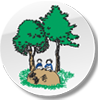Design and Technology at Lawley Primary School
Design and Technology at Lawley Primary School
The whole school community at Lawley have high expectations for our children, and strive to ensure they leave school as confident, polite and independent young people, with the appropriate skills, values and learning to become successful in whatever their future will be. We aspire to instil in all our children a desire to never stop learning and to have the courage to succeed in whatever they do, across all areas of school life and beyond. At Lawley we are ‘Planting the seeds, growing the future.’
Led by Fiona Swindell
Intent
At Lawley Primary School, it is our intention to ensure Design and Technology is an exciting, relevant, thought provoking and practical subject.
We motivate children to become aware of different environments/ periods of time and the products engineered within in them. We recognise Design and Technology inspires creative thinking to all children and allows them to consider real life structures and designs in this way. It is our aim to prepare and inspire all children for life in the wider, everchanging technological world.
As a school, we encourage our pupils to use their creative curiosity to engage and analyse products which leads on to creative and technical opportunities for designing and planning. Lawley primary School endeavours to make non tenuous cross curricular links where possible, which adds value, relevance and reality to the topics being investigated. To support this, we ensure the children use the 3 S’s – Something, for Someone for Some purpose throughout their project. This expands to the six fundamental areas which include: the user, the purpose, innovation, authenticity, functionality and design decisions. The inclusion of a visit from a STEM Ambassador and researching both historical and present designers, engineers and scientists, enhances the children’s experiences and understanding of future opportunities and their potential in the wider world.
Our principle aims for Design and Technology are for children to:
build on each child’s creative, technical and practical skills and knowledge enabling them to be confident in carrying out everyday tasks and to be successful in being part of an everchanging technological world.
develop, challenge and apply our children’s knowledge, understanding and skills so they can construct high quality product, which they constantly evaluate and modify, in order to meet the needs of a variety of people and purposes.
assess their product continually and to accept comments and suggestions from others. They should also be able to suggest appropriate modifications to others.
learn how to cook with the knowledge of producing healthy and nutritional food.
Implementation
We teach Design and Technology in accordance with the National Curriculum. Lawley Primary School has adopted the Projects on a page as the main support for our teaching in conjunction with The National Curriculum.
Each unit follows the Design, Make, Evaluate and Technical knowledge process.
Areas of learning include:
Mechanical systems
Food and Nutrition
Textiles
Structures
Electrical Systems (KS2 only)
Design Technology takes place once a term across all year groups. The units of work revisit on skills and knowledge previously learnt and builds on them. This supports children in consolidating new knowledge and how they use this to further develop their learning.
Work is uploaded on to our work platform where work can be shared and it is displayed within school. There are opportunities for children to participate in organised challenges within the wider community including a local Secondary school and the STEM Network partnership.
Impact
We continue to monitor the children’s progress using the Key Stage guidance in the National Curriculum and progression statements. This is a continuous process which allows teachers to differentiate and extend children’s thinking, learning and practical opportunities.
The implementation of this curriculum ensures that, by the time children leave Lawley Primary School, they will be experienced in the thinking, designing, constructing and the evaluating process. Using, reading and writing technical vocabulary and measurements will become part of everyday life and natural links to other subjects will be made as they move through the school and beyond. The children will be confident to use a variety of skills which they will be able to demonstrate accurately and independently. They will be able to recognise the potential for new or modified products and will be able to suggest appropriate materials, tools and skills to be used with reasoning. They will understand the value of Design and Technology within the wider world and be inspired to pursue this area as they move through their teenage years and into adult life.
